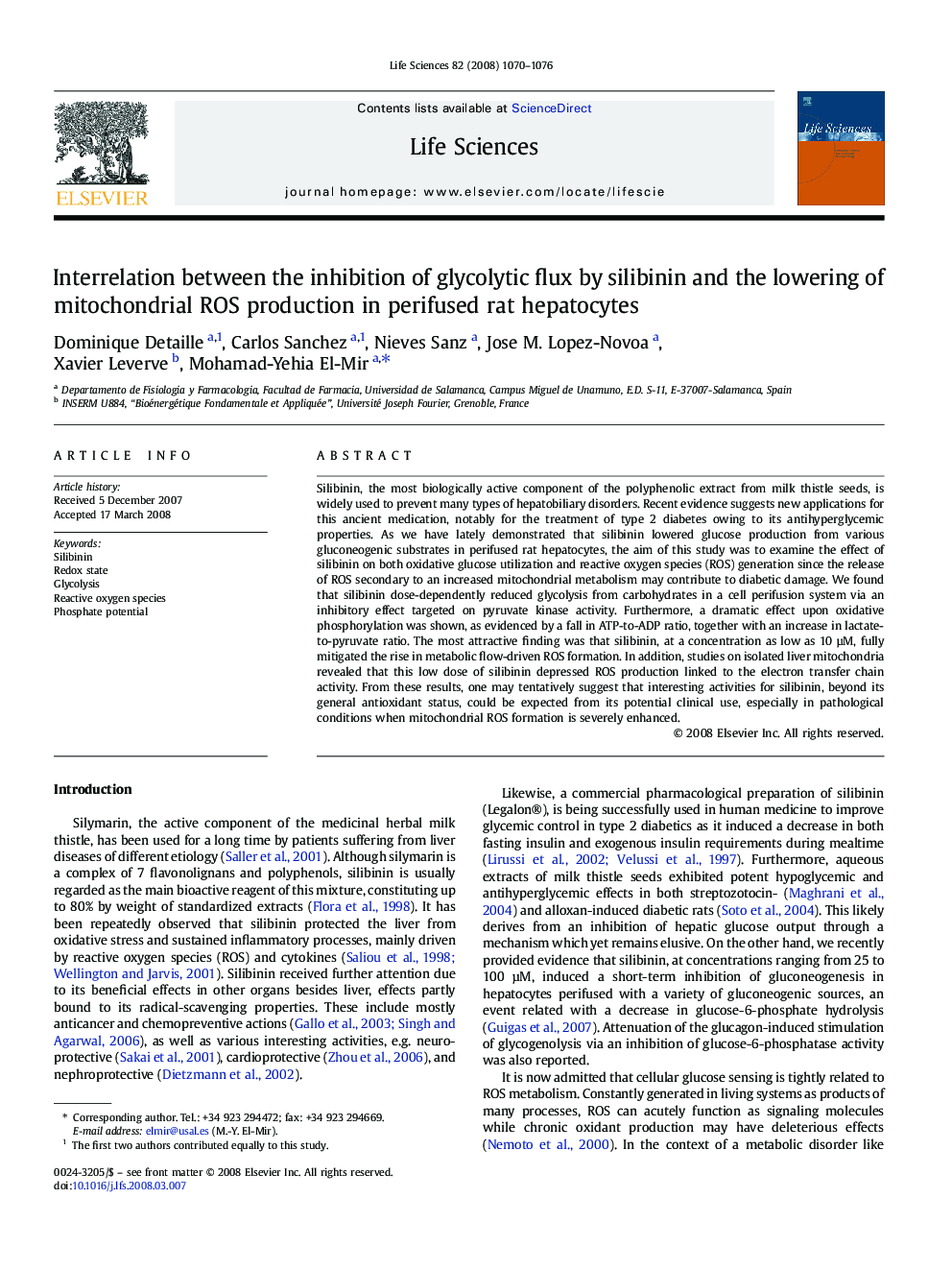| Article ID | Journal | Published Year | Pages | File Type |
|---|---|---|---|---|
| 2553753 | Life Sciences | 2008 | 7 Pages |
Silibinin, the most biologically active component of the polyphenolic extract from milk thistle seeds, is widely used to prevent many types of hepatobiliary disorders. Recent evidence suggests new applications for this ancient medication, notably for the treatment of type 2 diabetes owing to its antihyperglycemic properties. As we have lately demonstrated that silibinin lowered glucose production from various gluconeogenic substrates in perifused rat hepatocytes, the aim of this study was to examine the effect of silibinin on both oxidative glucose utilization and reactive oxygen species (ROS) generation since the release of ROS secondary to an increased mitochondrial metabolism may contribute to diabetic damage. We found that silibinin dose-dependently reduced glycolysis from carbohydrates in a cell perifusion system via an inhibitory effect targeted on pyruvate kinase activity. Furthermore, a dramatic effect upon oxidative phosphorylation was shown, as evidenced by a fall in ATP-to-ADP ratio, together with an increase in lactate-to-pyruvate ratio. The most attractive finding was that silibinin, at a concentration as low as 10 µM, fully mitigated the rise in metabolic flow-driven ROS formation. In addition, studies on isolated liver mitochondria revealed that this low dose of silibinin depressed ROS production linked to the electron transfer chain activity. From these results, one may tentatively suggest that interesting activities for silibinin, beyond its general antioxidant status, could be expected from its potential clinical use, especially in pathological conditions when mitochondrial ROS formation is severely enhanced.
